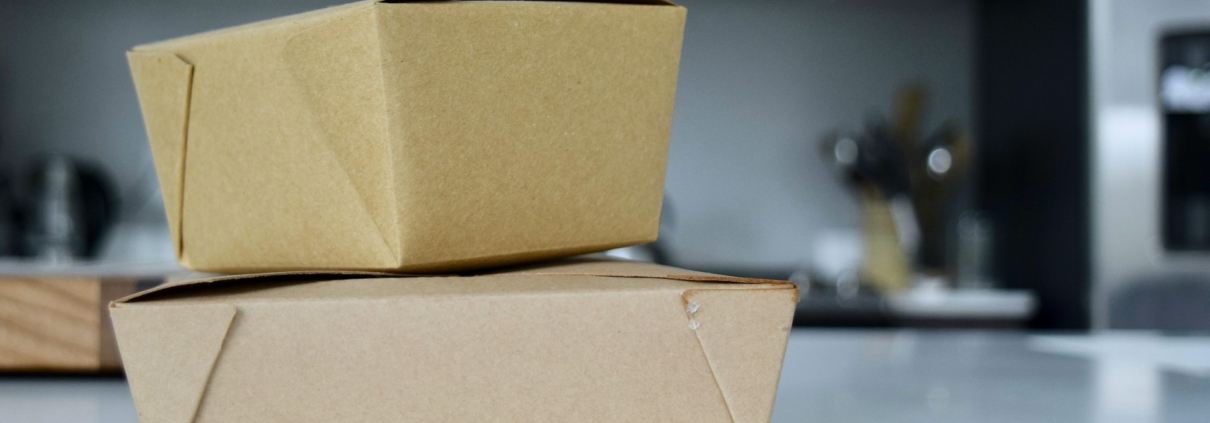When Custom Flexible Packaging Goes Wrong and How to Fix It
There’s plenty of pressure when your product relies on presentation to make an impact. For small and growing brands, custom flexible packaging plays a huge role in how customers see your product on the shelf, in their hands, or online. Whether it’s a stand-up pouch for granola, a flat bottom bag for fresh coffee beans, or printed flow wrap to protect and show off snack bars, packaging does more than just hold your product. It sets the tone for your brand and influences whether someone adds it to their basket or walks away.
But packaging that misses the mark can do more harm than good. Whether it shows up creased, leaks oil, loses colour, or doesn’t survive transport, flawed packaging can leave you looking unprofessional. Worse still, it puts your product at risk. These kinds of mistakes are often frustrating, especially when time, money, and effort have been invested in making a good product. The good news is that when custom flexible packaging goes wrong, you’re not stuck. There are ways to fix issues and get future orders right without starting from scratch.
Common Issues in Custom Flexible Packaging
When something feels off with your packaging, it usually comes down to a few core problems. Even small issues can snowball once products hit shelves or are shipped to customers.
Here are some common problems we’ve seen across different types of flexible packaging:
– Material quality feels too thin or flimsy – Flat bottom bags or pouches that can’t hold shape or don’t protect contents can lead to crush damage or quicker spoilage.
– Grease shows through in spots – Especially noticeable in takeaway foods like burgers or baked treats. If you’re using low-grade greaseproof paper, your food might look soggy and unprofessional.
– Print quality isn’t sharp – This can mean blurry logos, incorrect colours, or inconsistent finishes. It might not sound like a big deal, but presentation builds trust. If labels or packaging design look off, people assume the same about your product.
– Poor seal strength – Spout pouches or flow wraps splitting open before reaching a shelf isn’t just wasteful, it reflects badly on brand quality and care.
– Eco-claims that don’t match performance – Biodegradable or compostable materials that break down too quickly, or don’t last long enough during warehousing and distribution, can damage your products and your reputation.
Presentation starts with material and design, but it’s carried through durability and polish. Packaging needs to arrive in good condition and perform as expected. Anything less doesn’t just cause product loss, it also makes your brand look like it’s not ready for the big leagues.
Identifying the Root Cause
When packaging doesn’t perform as expected, the initial instinct is often to fix what’s visible. Maybe change the paper stock, alter the design, or switch print suppliers. But the real fix usually starts by pausing and reviewing the bigger picture.
Start by asking a few key questions:
- When does the problem show up? During packing? At the customer’s home? On the store shelf? The timing gives clues about the root cause.
- Who has flagged the issue? If it’s coming from stockists, that could mean the packaging isn’t surviving transport or isn’t meeting retail standards. If customers are calling it out, it might be usability or perception-related.
- What types of products are affected? If coffee pouches are holding up but biscuit packs are smudging or splitting, the issue likely stems from how that specific product interacts with the packaging.
- Have your orders increased lately? Scaling up is exciting, but rushed reprints, cheaper materials, or new suppliers can bring on problems if there wasn’t time to test properly.
It helps to look at both technical elements (like seal strength, thickness, or ink bonding) and visual quality (like layout, colours, and legibility). Don’t overlook feedback from packing teams, delivery crews, or long-term customers. They’re often the first to notice subtle changes.
Identifying the root cause early saves time and money. It helps when working with print or packaging suppliers, as a clear record of what’s gone wrong allows them to offer tested solutions rather than guessing.
Solutions to Fix Custom Flexible Packaging Problems
1. Choosing the Right Materials
Finding the right material can make a noticeable difference in how packaging performs. For products like pastries, burgers, or other oily foods, high-quality greaseproof paper is a sensible solution. It helps maintain food integrity and keeps the presentation neat. This is especially helpful in cafés, bakeries, and takeaway outlets. Choose paper that not only protects but also supports branding. Go with suppliers who are known for reliably producing grease-resistant solutions that suit your specific type of product.
2. Ensuring Accurate Printing
Your packaging invites customers to explore your product. If the brand colours are inconsistent or the logo looks off, first impressions will suffer. Reliable printing services are key here. Before full-scale production, always ask for proof prints and double-check design files. Make sure colour profiles are accurate and follow brand guidelines. This is particularly important for packaging like ice cream tubs or high-impact retail display pouches, where vibrant branding can drive purchasing decisions.
3. Enhancing Durability
Durable packaging reduces waste and improves customer experience. If your spout pouches are splitting or your flow wrap is tearing during transit, it’s time to rethink construction. Thicker films and improved seal designs can prevent this. Consider material properties such as resistance to temperature shifts or moisture. This is especially important for perishable or long-shelf-life items. The small investment in more durable construction can pay off through fewer returns and better shelf performance.
4. Optimising Design
Good design blends beauty with function. It connects with your audience and represents your product values clearly. Packaging should be easy to open, stack, reseal, or recycle without compromising on looks. For example, a compact design for takeaway boxes can still carry brand elements, making it convenient for customers while supporting your identity. Design decisions should always consider function, display appeal, and storage convenience. Effective packaging not only protects but communicates your professionalism.
Partnering with the Right Packaging Provider
Trusting the right packaging provider can change everything. Working with experienced teams means access to better materials, smarter design input, and more consistent results. Local providers often bring the added benefit of understanding regional preferences and regulations. They are more accessible when discussions are needed around urgency, product revisions, or troubleshooting.
Look for providers who offer a variety of solutions like folding cartons, stand-up pouches, shrink sleeves, and display-ready units. Those who can support you through multiple phases of your growth will be valuable in the long run. A packaging partner should act like an extension of your brand team, pushing creative improvements while helping avoid practical pitfalls.
Turn Packaging Problems into Opportunities
Even when packaging fails, it brings a valuable lesson. What looks like a setback might be the moment your brand evolves. Tackling challenges head-on lets you adjust, reframe, and put better packaging into your customers’ hands. Brands that openly address their past packaging issues often come back stronger, with a sharper strategy and renewed customer confidence.
Maybe a snack bar wrapper lacked strength and needed a thicker film. That change, done smartly, could introduce a high-definition print version with clearer branding. The result? A product that grabs more attention and enhances shelf presence. Or perhaps altered packaging solved a food shelf-life issue, keeping customers happier for longer.
Every fix boosts confidence and reinforces your commitment to quality. Take these learning moments seriously and turn them into competitive advantages. Packaging is often your first and last impression, so getting it right means stronger returns and deeper brand loyalty across the board.
Discover how the right custom flexible packaging can elevate your product’s presence and boost buyer confidence. At Star Stuff Group, we bring together functionality and design to deliver packaging that captures attention and protects your product every step of the way. Let our family-owned team help you create packaging that reflects your brand’s quality and supports your long-term growth.




